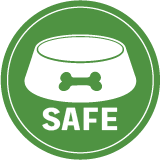When Your Dog Struggles to Breathe — Laryngeal Paralysis Explained
If you suspect something isn't right with your dog's breathing, don't wait. Early action can make all the difference when it comes to this condition.

STORY AT-A-GLANCE
- Laryngeal paralysis makes breathing harder for dogs, especially in their senior years, and is often mistaken for aging — early detection can dramatically improve your dog's comfort and longevity
- This condition occurs when weakened or paralyzed nerves in the larynx (voice box) prevent it from opening properly, narrowing your dog’s airway and making exercise, heat, or excitement difficult and even dangerous
- Common signs include noisy breathing, raspy or hoarse sounding bark, loud panting at rest, coughing while eating, and collapse — many owners overlook these, thinking their dog is simply getting older
- Geriatric Onset Laryngeal Paralysis Polyneuropathy (GOLPP) is a major cause in older large-breed dogs and may also affect mobility, swallowing, and nerve function beyond the airway. It can also predispose your dog to developing serious conditions such as pneumonia.
- Mild cases can be managed with lifestyle changes and natural therapies such as acupuncture; more serious ones may need tie-back surgery — many dogs live active, happy lives when this condition is properly treated and monitored
Breathing is one of the most fundamental processes of life, and for dogs, just like humans, every breath should come with ease. Yet for some dogs, especially those reaching their senior years, breathing may become increasingly labored, not due to normal aging, but because of a condition that affects their upper airway — laryngeal paralysis.
If your dog has begun to pant excessively, sound hoarse when barking, slow down on walks, or exhibit signs of respiratory distress, laryngeal paralysis could be the underlying issue. Though the condition may sound alarming, the good news is that it is manageable, particularly when diagnosed early and treated appropriately.
Understanding the Role of the Larynx
To understand how laryngeal paralysis affects your dog, you need to first understand what the larynx does. Often referred to as the "voice box," this structure is located at the back of your dog's throat and is composed of cartilage structures and muscles. Its responsibilities are threefold:1
- Facilitating airflow — When your dog breathes in, the muscles of the larynx contract to open the airway, allowing oxygen to pass down the trachea (windpipe) and into the lungs.
- Protecting the airway during swallowing — When your dog swallows food or water, the larynx closes tightly to prevent anything from entering the airway. This is a critical reflex that guards against choking and aspiration.
- Producing vocal sounds — The movement of air across the larynx is also responsible for your dog's bark and other vocalizations.
In a healthy dog, the laryngeal cartilages open and close seamlessly in response to breathing or swallowing. But if the nerves that control the opening of the larynx are weakened or paralyzed and not functioning normally, the cartilage remains partially closed or collapses inward. This creates a physical blockage that can significantly impair airflow and also lead to aspiration of food or fluids when swallowing.
What Is Laryngeal Paralysis?
Laryngeal paralysis is classified as an upper respiratory system disorder. This means the muscles and nerves responsible for opening the larynx no longer function as they should. Hence, during inhalation (especially if your dog is active, excited, or overheated), the airway cannot completely open, leading to increased respiratory sounds when breathing and increased respiratory effort, causing a range of secondary problems.
In dogs with this condition, the laryngeal cartilages — particularly the arytenoid cartilages — either do not open at all or do so only partially — to your pet, it feels like they are breathing through a straw.2 This narrowing of the airway results in different symptoms — some appear minor, while others are severe.3
What Causes Laryngeal Paralysis in Dogs?
Laryngeal paralysis can arise for a variety of reasons, but it can be divided into two categories — congenital and acquired.
A less common cause is congenital laryngeal paralysis; a condition that is present at birth and sometimes is noticeable in puppies — The nerves responsible for controlling the larynx did not develop correctly, or they may begin to degenerate early in life. This hereditary condition affects young dogs and can cause trouble breathing and swallowing. Congenital laryngeal paralysis symptoms often appear within the first year of life, and certain breeds are predisposed to it, including:4
- Siberian Huskies
- Bull Terriers
- Dalmatians
- Bouvier des Flandres
- Rottweilers
If your pup falls under any of these breeds, observe them closely — pets affected with this condition exhibit noisy breathing, poor exercise tolerance, coughing, gagging, trouble swallowing during eating or drinking and changes in bark at a very young age.
The type of laryngeal paralysis which is more commonly seen is the acquired form of the condition, which typically emerges in middle-aged or older dogs — most often in large breeds. Some breeds which are predisposed to this are:5
- Labrador Retrievers
- Golden Retrievers
- St. Bernards
A neurological condition known as Geriatric Onset Laryngeal Paralysis Polyneuropathy (GOLPP) is the primary cause of this condition;6 this is when nerve degeneration begins in the recurrent laryngeal nerves and gradually progresses to affect other peripheral nerves in the body.
Hence, what starts as mild breathing difficulty may eventually lead to weakness in the hind limbs, an abnormal gait, or difficulty swallowing due to esophageal dysfunction. This can lead to more serious issues such as pneumonia. Other contributing factors include:7
- Hypothyroidism — Having low levels of thyroid hormone may contribute to poor nerve function.
- Trauma — Neck or chest injuries to the neck or chest, whether from accidents or surgical complications, can impair the recurrent laryngeal nerve.
- Tumors or masses — Growths in the throat, neck, or upper chest may press on nerves, disrupting their normal function.
- Inflammatory or autoimmune diseases — Although rare, some systemic conditions can lead to nerve inflammation and damage.
However, there are some cases where the exact cause remains idiopathic — meaning the exact underlying cause is unknown.8
Recognizing the Signs
One of the challenges in diagnosing laryngeal paralysis is that the early signs are often subtle and easily mistaken for normal aging. However, knowing what to look for can help you identify the condition before it becomes more serious. Common symptoms include:9,10
- Noisy breathing, which is especially noticeable during inhalation
- Changes in their bark (they may sound hoarse, raspy, or weaker than usual)
- Increased or loud panting, even while resting or in cool environments
- Overheating in hot weather
- Coughing or gagging when eating or drinking
- Decreased energy or reluctance to walk, run, or play
- Anxiety or restlessness, particularly when breathing becomes more labored
- In severe cases — bluish gums (cyanosis) may occur, which is a sign of inadequate oxygenation in severe cases — collapsing or fainting may also occur, especially after exertion or in hot weather
These symptoms tend to worsen in warm, humid conditions or when your dog becomes excited or physically active.
How Is Laryngeal Paralysis Diagnosed?
If you suspect your dog may be experiencing laryngeal paralysis, bring them to an integrative vet immediately for proper evaluation. Diagnosis typically involves several steps:11
- Medical history and physical examination — Your veterinarian will ask about your dog's symptoms, such as changes in breathing, barking, exercise habits, and eating behavior. A physical examination will help assess overall health and identify any signs of respiratory distress or neurological involvement.
- Blood and hormonal tests — These will help screen for hypothyroidism or other systemic conditions that could affect nerve function.
- Imaging exams — Chest and throat X-rays, MRIs, or CT scans may be used to rule out masses, pneumonia, or spinal abnormalities.
- Laryngoscopy — This is the definitive diagnostic test for laryngeal paralysis. Performed under light sedation, this procedure involves inserting a scope into the throat to visually assess whether the laryngeal cartilages are opening properly when your dog breathes in. This test is usually performed by a neurologist or specialist.
In dogs with laryngeal paralysis, one or both sides of the larynx will remain mostly closed or will not move at all.
Treatment Options
The best treatment for laryngeal paralysis depends on the severity of your dog's symptoms, overall health status, and the presence of any underlying conditions. In dogs with mild or early-stage symptoms, these lifestyle adjustments will help keep them comfortable and prevent the condition from worsening:
- Avoiding heat and humidity
- Limiting exercise
- Using a harness instead of a collar to eliminate pressure on the neck
- Maintaining a healthy weight
- Administering antianxiety medications or anti-inflammatory drugs during periods of stress or discomfort
- Acupuncture treatments
- Herbal therapy
For dogs experiencing more significant breathing difficulties or who are no longer responding to conservative measures, your vet may recommend surgery. The most common surgical approach is called unilateral arytenoid lateralization or "tie-back" surgery, wherein one side of the larynx is permanently pulled open and sutured into place, creating a wider airway, so your dog can breathe more freely.12
However, this procedure can lead to aspiration pneumonia, a condition where food or water is accidentally inhaled into the lungs due to the inability to fully close the airway during swallowing. Hence, dogs who undergo this surgery need to be monitored closely and follow specific care guidelines postoperatively.13,14
Living with a Dog Diagnosed with Laryngeal Paralysis
While laryngeal paralysis is a lifelong condition, many dogs go on to live full, joyful lives with the right care and monitoring. The long-term outlook for dogs with laryngeal paralysis is mostly good — especially when diagnosed early and managed appropriately.15
Although this condition can deeply affect your dog's comfort and quality of life, remember that increased awareness, early detection, and appropriate intervention will help your dog live well despite the diagnosis.
By taking informed, compassionate action, you can make a world of difference — helping your dog breathe easier, stay active longer, and enjoy more precious years by your side.










